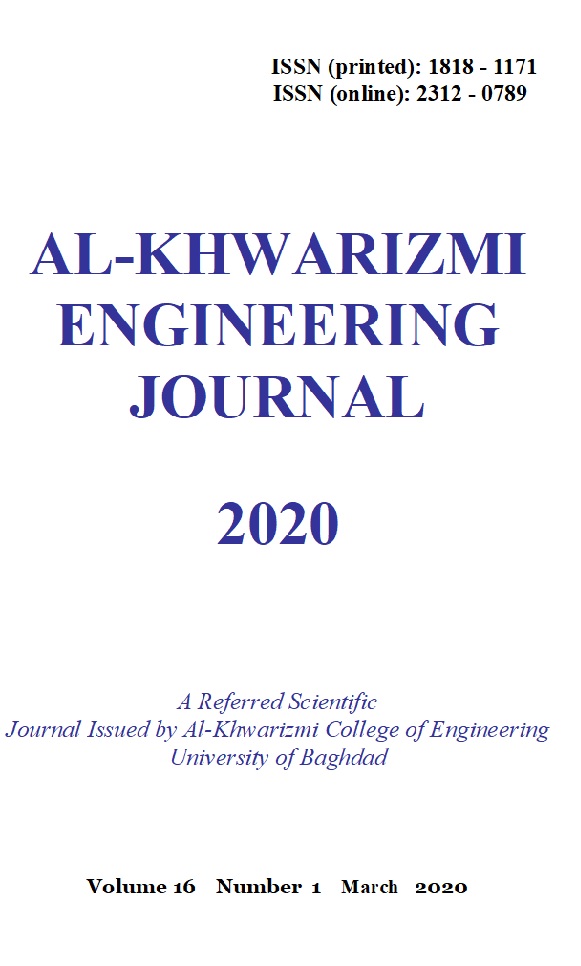Selection of OptimumRadiant Barrier System (RBS) Location in Double Skin Ventilated Roofs
DOI:
https://doi.org/10.22153/kej.2020.11.001Abstract
Double skin ventilated roof is one of the important passive cooling techniques that aims to reduce solar heat gain through roofs by reducing both the conduction and convection heat transfer from the roof to the ceiling of buildings. On the other hand, radiant barrier system (RBS) is very powerful in blocking the radiation heat transfer between the two skins. In this research,the effect of placing a thin layer of aluminium foil at different locations on the thermal insulation performance of a double skin ventilated roof model is investigated experimentally and the optimum location that transmits less heat flux from the lower skinis specified.The model is made of two parallel inclined galvanized steel plates. Galvanized steel has been used in the roof construction of industrial buildings and storehouses in Iraq.The radiant barrierisapplied alternately, on the outer surface of the upper skin, on the inner surface of the upper skin, suspended in the airgap between the skins, and on the inner surface of the lower skin.These casesareconsidered as Model A, Model B, Model C, and Model D, respectively. It is found that the radiant barrier can block up to78% of the heat in Model A, 71% in Model B, 94% in Model C, and 91% in Model D as compared with the Basic Model.Since the radiant barrierin both Model C and Model D blocks almost the same amount of heat, the location of the radiant barrierin Model D is chosen as the optimumradiant barrierlocation because this model is more practical.
(Received 23 July 2019; accepted 24 November2019)
Downloads
Downloads
Published
Issue
Section
License
Copyright: Open Access authors retain the copyrights of their papers, and all open access articles are distributed under the terms of the Creative Commons Attribution License, which permits unrestricted use, distribution, and reproduction in any medium, provided that the original work is properly cited. The use of general descriptive names, trade names, trademarks, and so forth in this publication, even if not specifically identified, does not imply that these names are not protected by the relevant laws and regulations. While the advice and information in this journal are believed to be true and accurate on the date of its going to press, neither the authors, the editors, nor the publisher can accept any legal responsibility for any errors or omissions that may be made. The publisher makes no warranty, express or implied, with respect to the material contained herein.
















